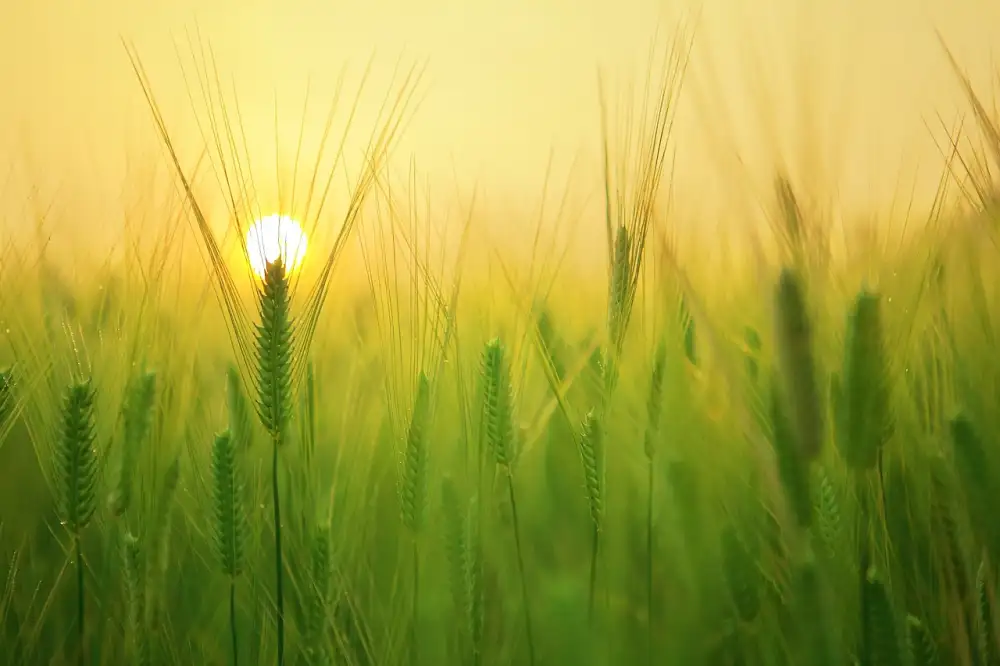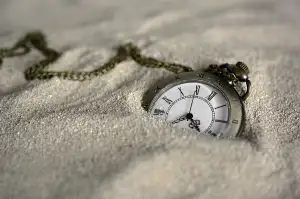Mastering the Art of Rhubarb Harvest: When to Pick the Perfect Stalks at Home

Rhubarb, with its vibrant red stalks and tangy flavor, is a versatile ingredient that can be used in a variety of dishes. Whether it's a pie, jam, or compote, harvesting your own rhubarb can add a sense of satisfaction and freshness to your culinary creations. But before you dive into the world of rhubarb harvesting, it's important to understand the growth cycle and signs of readiness for harvest. In this article, we will guide you through the art of rhubarb harvest, from knowing when to pick the perfect stalks to storing and preserving them for future use. So let's get started on this exciting journey of mastering the art of rhubarb harvest!
Understanding Rhubarb Growth Cycle
To master the art of rhubarb harvesting, it is essential to understand the growth cycle of this versatile plant. Rhubarb is a perennial vegetable that goes through distinct stages of growth throughout the year.
In early spring, as temperatures start to rise, rhubarb plants emerge from their winter dormancy. This is when you will notice the first signs of new growth, with vibrant red or green stalks pushing through the soil.
During this initial stage, it is crucial to resist the temptation to harvest any stalks. The plant needs time to establish its root system and gather energy for future growth. Patience is key at this stage, as premature harvesting can weaken the plant and affect its overall productivity.
As the season progresses, rhubarb plants continue to grow and develop. The stalks become thicker and more robust, while the leaves expand in size. This period of active growth typically lasts until early summer.
It is important to note that during this phase, rhubarb plants are still gathering energy reserves for future seasons. Therefore, it is best to avoid harvesting any stalks during this time as well.
Towards late spring or early summer, rhubarb enters its flowering stage. At this point, you may notice clusters of small flowers forming on tall stems above the foliage. While these flowers may be visually appealing, they indicate that the plant has shifted its focus from producing edible stalks to reproduction.
Allowing your rhubarb plant to flower can divert valuable nutrients away from stalk production and reduce overall yield. To maximize your harvest, it is recommended to remove these flower stems promptly.
By mid-summer, as temperatures rise and daylight hours decrease, rhubarb enters a period of dormancy once again. The leaves start to wilt and turn yellow while the stalks lose their vibrant coloration.
This dormant phase signals that it's time for a break in harvesting. Allowing the plant to rest and recharge during this period will promote healthier growth in the following season.
Understanding the growth cycle of rhubarb is crucial for successful harvesting. By respecting each stage of the plant's development, you can ensure a bountiful harvest year after year.
Signs of Rhubarb Readiness for Harvest
Before you embark on your rhubarb harvest, it is essential to know the signs that indicate the readiness of the stalks. One of the most obvious signs is the size of the stalks. Mature rhubarb stalks are typically thick and firm, measuring around 10-15 inches in length.
Another indicator is the color of the stalks. When rhubarb is ready to be harvested, the stalks will have a vibrant and deep red hue. However, keep in mind that some varieties may have green or pinkish stalks, so it's important to know what color your specific variety should be at maturity.
Additionally, check for fully developed leaves. The leaves should be large and fully unfurled, indicating that the plant has reached its peak growth stage.
Lastly, gently tug on a few stalks to test their readiness. If they easily detach from the crown without much resistance, it's a good sign that they are ready for harvest.
By paying attention to these signs, you can ensure that you pick rhubarb at its prime and enjoy its delicious flavors in your culinary creations.
Best Time to Harvest Rhubarb
The best time to harvest rhubarb is in the spring, when the stalks are firm and vibrant in color. Typically, this occurs around 8-10 weeks after planting. It's important to wait until the plant is well-established before harvesting any stalks. This allows the rhubarb to develop a strong root system and ensures a healthy crop for future harvests. Keep an eye on the size of the stalks as well - they should be at least 10-12 inches long before picking. Harvesting too early can weaken the plant and reduce future yields. So be patient and wait for the perfect timing to enjoy your bountiful rhubarb harvest!
Harvesting Techniques for Rhubarb
Harvesting rhubarb requires careful technique to ensure the best quality stalks. When it comes to harvesting, it's important to remember that only the stalks should be harvested, while the leaves should be left intact as they are toxic. To harvest rhubarb, simply grasp the stalk near its base and give it a gentle tug. The stalk should easily detach from the plant. Avoid cutting or twisting the stalks, as this can damage the plant. It's also recommended to harvest only about one-third of the plant at a time to allow for continued growth throughout the season. By following these techniques, you'll be able to enjoy a bountiful harvest of delicious rhubarb stalks.
Storing and Preserving Freshly Harvested Rhubarb
Once you have successfully harvested your rhubarb stalks, it's important to know how to store and preserve them properly to maintain their freshness and flavor. Here are some tips to help you make the most of your freshly harvested rhubarb:
1. Trim the stalks: Start by removing any leaves from the stalks, as they are toxic and should not be consumed. Cut off the ends of the stalks as well.
2. Rinse and dry: Give the stalks a gentle rinse under cold water to remove any dirt or debris. Pat them dry with a clean towel before proceeding.
3. Refrigerate: To keep your rhubarb fresh, place the stalks in a plastic bag or wrap them in a damp paper towel. Store them in the refrigerator for up to two weeks.
4. Freezing option: If you have an abundance of rhubarb and want to preserve it for longer, consider freezing it. Cut the stalks into small pieces and blanch them in boiling water for a minute or two. Transfer them into an airtight container or freezer bags and freeze for up to six months.
5. Rhubarb compote: Another great way to preserve rhubarb is by making a delicious compote. Simply chop the stalks into small pieces, add sugar, lemon juice, and cook until soft. Allow it to cool before transferring it into sterilized jars and refrigerating or canning for long-term storage.
By following these storing and preserving techniques, you can enjoy the tangy goodness of your homegrown rhubarb all year round!
Tips for Maximizing Rhubarb Harvest
To maximize your rhubarb harvest, follow these tips:
1. Fertilize: Before the growing season begins, apply a balanced fertilizer to provide essential nutrients for robust growth.
2. Mulch: Apply a layer of organic mulch around the base of the plant to retain moisture and suppress weeds. This will help the rhubarb thrive and produce more stalks.
3. Water regularly: Rhubarb requires consistent moisture, especially during dry spells. Water deeply once or twice a week, ensuring the soil is evenly moist but not waterlogged.
4. Remove flower stalks: As soon as you notice flower stalks emerging, promptly remove them. Flowering diverts energy away from stalk production, so by removing them, you encourage more vigorous growth.
5. Divide and transplant: Every few years, divide mature rhubarb plants to rejuvenate them. Transplant the divisions to new areas of your garden or share them with fellow gardeners.
6. Harvest selectively: Avoid harvesting all the stalks at once; instead, selectively pick only a few from each plant. This allows the remaining stalks to continue growing and ensures a prolonged harvest period.
7. Do not overharvest: Never remove more than one-third of the plant's total stalks during a single harvest session. Overharvesting weakens the plant and reduces future yields.
By following these tips, you can maximize your rhubarb harvest and enjoy an abundance of delicious stalks throughout the season!
Now that you have successfully harvested your rhubarb stalks, it's time to savor the rewards of your hard work. With its tart flavor and vibrant color, rhubarb can be used in a variety of delicious dishes.
One classic way to enjoy rhubarb is by making a rhubarb pie or crumble. The tangy taste of the rhubarb pairs perfectly with a sweet and buttery crust or topping. Add some strawberries for an extra burst of flavor.
If you prefer something refreshing, try making a rhubarb compote or syrup. These can be drizzled over pancakes, waffles, or ice cream for a delightful treat. You can also mix them into cocktails or sparkling water for a unique and flavorful beverage.
Don't forget about savory options! Rhubarb can be used in chutneys and sauces to accompany meats like pork or chicken. Its tartness adds a wonderful contrast to rich and savory flavors.
Remember to experiment with different recipes and techniques to make the most out of your rhubarb harvest. Whether you're baking, cooking, or preserving, this versatile ingredient will surely elevate any dish.
So go ahead and indulge in the fruits of your labor. With its distinctive taste and versatility, freshly harvested rhubarb is sure to delight your taste buds and impress your guests. Happy harvesting!
Published: 03. 01. 2024
Category: Home



